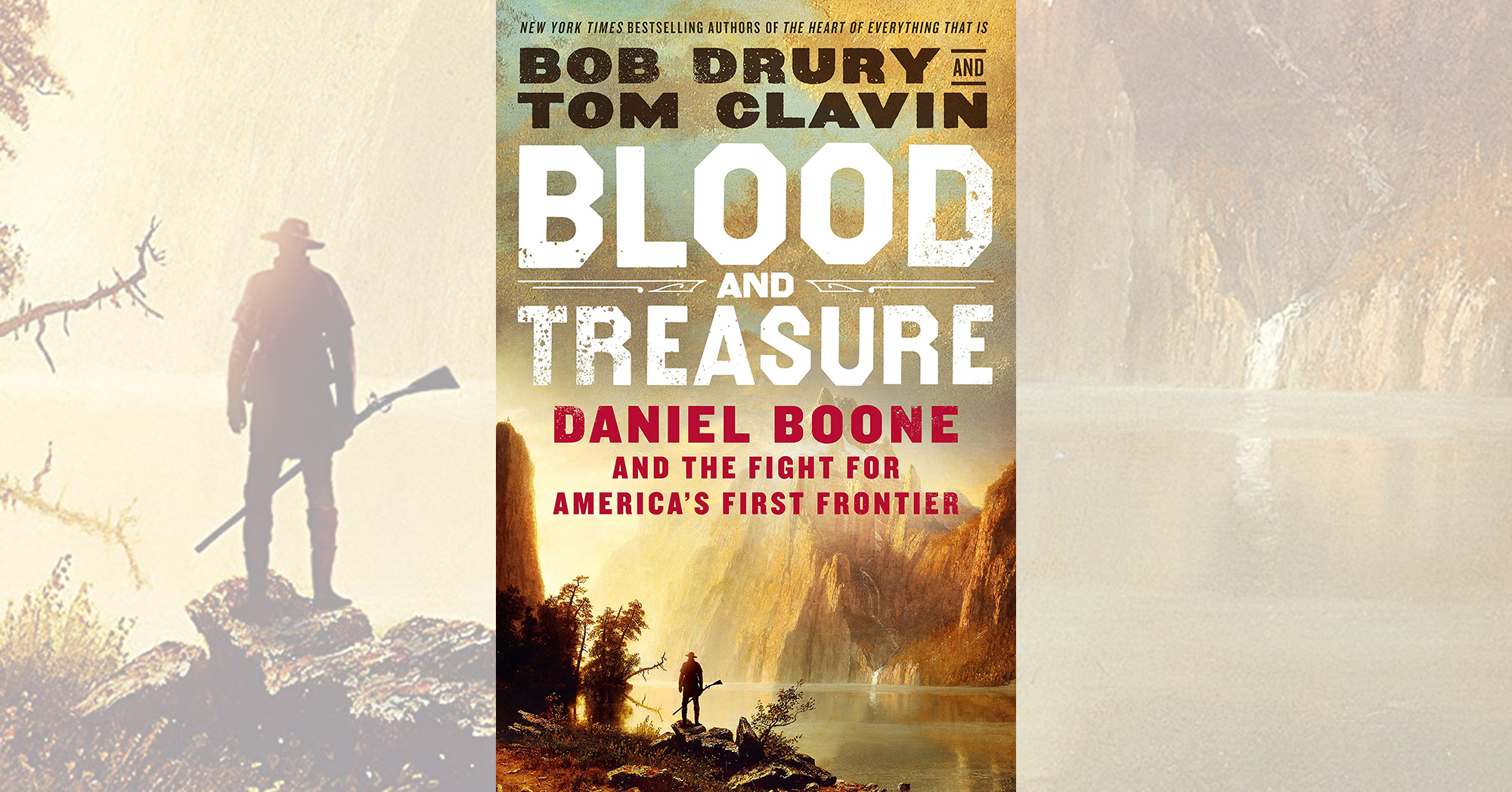Blood and Treasure: Daniel Boone and the Fight for America’s First Frontier, by Bob Drury and Tom Clavin, St. Martin’s Press, New York, 2021, $29.99
America’s first frontier, the one covered in this latest effort by The New York Times best-selling writing team of Bob Drury and Tom Clavin, lay west of the Appalachians and east of the Mississippi River. The title character, Daniel Boone (1734–1820), is the most famous character associated with that frontier, thanks to his exploits as a hunter, Indian fighter, explorer (think Cumberland Gap) and settler (particularly for settling in what became Kentucky). Boone was more than merely a creation of his early biographers, the authors argue. His lifetime of adventures and achievements were real.
Although the Cumberland Gap had long been used by Indians, Boone’s 1775 forging of a trail through this gap in the Appalachian Mountains did much to encourage westward expansion. Other notable Boone exploits cited by the authors include the rescue from Indians of his captive daughter Jemima (which laid the basis for a James Fenimore Cooper tale), his own dramatic escape and long journey to warn Boonesborough of an Indian attack, and “his subsequent leadership in the defense of that lonely outpost…[which] did have an impact on the western front of the American Revolution.”
While at times Boone courageously forged through the wilderness alone, he often circulated in small groups that included his brother Squire and other relatives and friends. Certainly there were other risk-taking long hunters and fighting men who never achieved his celebrity status. Case in point is one Simon Kenton (1755–1836), who saved the life of his friend Boone in 1777, survived running the gauntlet and torture at the hands of the Shawnee Indians, fought alongside George Rogers Clark during the American Revolution, explored and settled in Ohio, and served in the War of 1812. Drury and Clavin vividly depict the dangers frontiersmen faced. At the same time they acknowledge not all of such men were heroic. Neither do the authors neglect the other side of the story—that of the Indians, particularly the Shawnees, who chafed at the intrusion of white men into their lands. Many tribes allied themselves with the British Crown during the Revolution, and for many the fight continued long past the 1881 British surrender far to the east at Yorktown, Va. Boone eventually ventured west of the Mississippi to settle in what would become Missouri, but that’s another story.
—Editor
This post contains affiliate links. If you buy something through our site, we might earn a commission.





